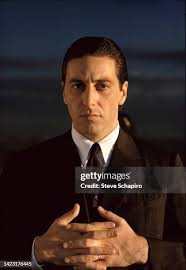
Introduction
Al Pacino is a name synonymous with cinematic excellence in Hollywood. With a career spanning over five decades, he is celebrated as one of the greatest actors of all time. His ability to portray complex characters has captivated audiences around the world, making him a staple in the film industry. As new generations discover his work, it remains vital to reflect on his contributions and the impact he has had on both film and culture.
Early Life and Career Beginnings
Born on April 25, 1940, in East Harlem, New York City, Al Pacino faced early struggles, including a difficult upbringing and financial hardship. Despite these challenges, Pacino’s passion for acting led him to study at the Herbert Berghof Studio and subsequently the Actors Studio, where he was mentored by the influential Lee Strasberg.
His breakthrough role came in 1972 with Francis Ford Coppola’s epic film The Godfather, where he portrayed Michael Corleone, a role that would become iconic in American cinema. The film’s commercial and critical success catapulted Pacino into stardom, earning him his first Academy Award nomination.
Career Highlights
Pacino’s filmography is impressive, marked by iconic performances in films such as Scarface, Dog Day Afternoon, and Heat. His intense portrayals and ability to convey deep emotional distance resonate with audiences. Pacino’s portrayal of Tony Montana in Scarface has become a cultural touchstone, influencing various aspects of popular culture.
Throughout his career, Pacino has amassed numerous awards, including an Academy Award for Best Actor for his role in Scent of a Woman (1992), several Golden Globe Awards, and a Tony Award for his stage work. His performances have not only earned accolades but solidified his status as a master of his craft.
Recent Work and Influence
In recent years, Pacino has continued to take on challenging roles, including his appearances in The Irishman (2019) and the acclaimed series Hunters (2020). His commitment to his craft remains unwavering, showcasing his versatility as both a film star and stage actor.
Pacino’s influence extends beyond films; he has inspired countless aspiring actors and has become a symbol of resilience in the entertainment industry. His ability to transition between theater and film exemplifies the demanding nature of the performing arts.
Conclusion
As Al Pacino continues to grace screens with his remarkable performances, his legacy as an actor endures. His work reminds us of the power of storytelling in film and the ability of actors to embody complex human experiences. For both seasoned fans and newcomers to his work, Pacino’s contributions to cinema are a continually unfolding story that emphasizes the importance of passion and dedication in achieving greatness.



